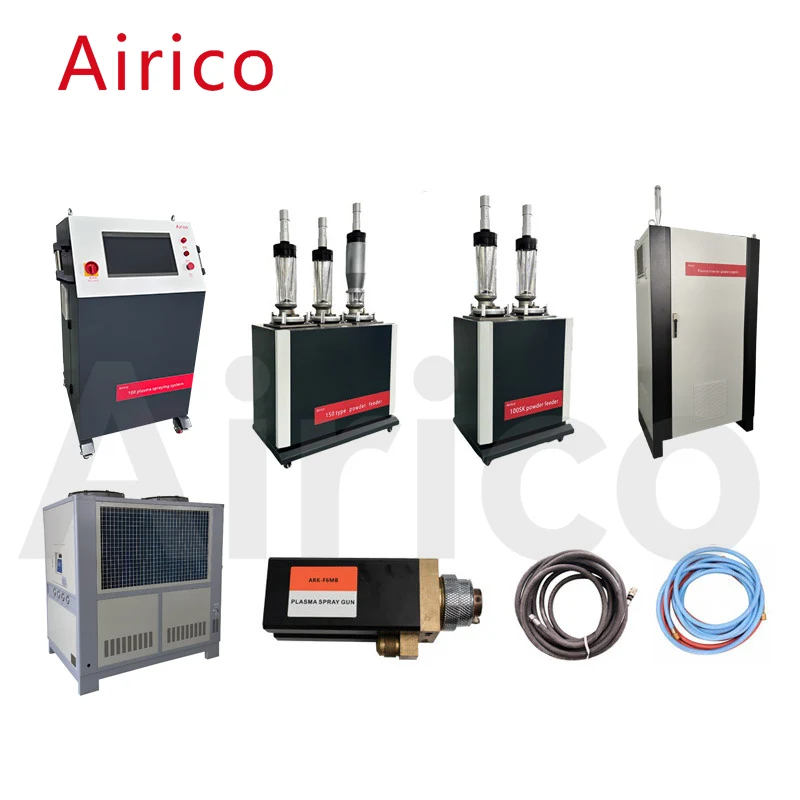Plasma spraying is a sophisticated coating process that utilizes an arc plasma as the heat source to melt and deposit materials onto a substrate. This method is widely applied in various industries to enhance the surface properties of materials, such as improving corrosion resistance, heat resistance, wear resistance, and electrical insulation. Here's a detailed look into how plasma spraying is performed.

Plasma spraying operates on the principle of arc plasma generation. An arc is created between two electrodes, typically made of non-consumable materials, which serves as the heat source. A flow of gas, such as argon, nitrogen, or hydrogen, is passed through the arc. This gas is ionized and heated to extremely high temperatures, ranging from 10,000 to 20,000 °C, forming the plasma jet. The plasma jet exits through a nozzle and is directed onto the substrate where the coating is to be applied.
A high-voltage power supply is used to create an arc between the electrodes.
The arc is maintained by a stable current flow, typically in the range of tens to hundreds of amperes.
An inert or reactive gas is fed into the plasma torch.
The gas is heated and ionized by the arc, forming a high-temperature plasma jet.
The plasma torch is the central component of the plasma spraying system.
It houses the electrodes and the nozzle through which the plasma jet exits.
The feedstock material, which can be in the form of powder, wire, or rod, is introduced into the plasma jet.
The material is heated and melted by the plasma, and the molten droplets are accelerated towards the substrate.
The substrate is cleaned and prepared to ensure good adhesion of the coating.
It may be preheated to reduce thermal shock during the coating process.
Steps in the Plasma Spraying Process
The substrate is preheated to a temperature close to the melting point of the feedstock material.
This helps in reducing thermal stress and improving the bond between the coating and the substrate.
The feedstock material is introduced into the plasma jet either by a powder feeder or by melting a wire or rod.
The material is heated and melted instantaneously by the high-temperature plasma.
The molten droplets are accelerated towards the substrate by the plasma jet.
As the droplets hit the substrate, they spread and flatten, forming a layer of the coating.
The process is repeated, with multiple layers being deposited to achieve the desired coating thickness.
Once the desired coating thickness is achieved, the plasma torch is turned off.
The coated substrate is allowed to cool slowly to avoid cracks and internal stresses.
Gas Type and Flow Rate: The type and flow rate of the gas affect the plasma temperature and jet velocity.
Power Supply and Arc Current: The arc current controls the plasma temperature and the rate of material melting.
Feedstock Material Properties: The chemical composition, particle size, and melting point of the feedstock material influence the coating properties.
Spray Distance and Nozzle Design: The distance between the nozzle and the substrate and the design of the nozzle affect the coating uniformity and deposition rate.
Plasma spraying is used in a wide range of applications, including:
Corrosion and Wear Resistance: Coatings such as ceramic and metallic oxides are applied to protect surfaces from corrosion and wear.
Thermal Barrier Coatings: Coatings like zirconia are used in aerospace and automotive industries to provide thermal insulation.
Electrical Insulation: Coatings such as alumina are applied to electrical components to enhance their insulation properties.
Biomedical Coatings: Coatings like hydroxyapatite are used in implants to improve their biocompatibility.
Plasma spraying is a versatile and powerful coating process that utilizes high-temperature plasma to melt and deposit materials onto a substrate. By carefully controlling the process parameters, such as gas type, arc current, feedstock material, and spray distance, a wide range of coatings with different properties can be produced. This technology is essential in many industries for enhancing the performance and durability of components and products.

